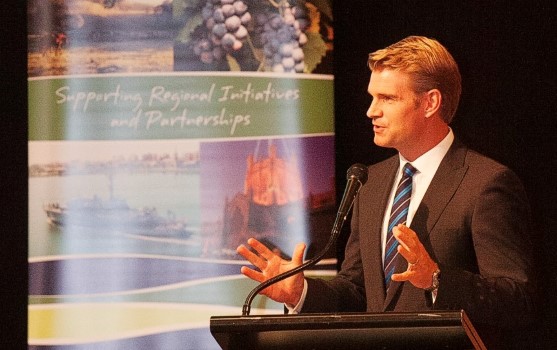OPINION – TODD WILLIAMS, CHIEF EXECUTIVE OFFICER RDA HUNTER
NO-ONE wants plans that don’t do anything. Well thought through projects, opportunities and regional needs that have a solid consensus, and business cases are needed to have an impact and be funded.
In the Hunter there are many plans, but there is only one Hunter regional plan. The RDA Hunter Regional Plan provides potential investors and policy-makers with a better understanding of the region with a focus on the economic development of the Hunter.
It also presents strategic priorities for the region, our comparative advantages, current and projected opportunities and the critical issues that must be addressed to achieve the region’s future ambitions.
RDA Hunter’s investment, innovation and infrastructure agenda is presented in the Hunter Regional Plan that are supported by regional priorities to support economic growth.
The regional priorities take into consideration demographic changes, the need to develop integrated land-use plans, encouragement of investment in the region and expanding Hunter markets into growing global economies; and, build and improve infrastructure to increase the productivity of Australia’s largest regional economy.
An example of successful planning has been for economic infrastructure. In recent years, three projects presented in the Hunter Regional Plan have been included on the National Infrastructure Priority list.
Indeed, the commonwealth and state governments have committed to funding two of these planned projects.
Firstly, improvements of the Scone level crossing and bypass; and, secondly improving road connectivity between Kooragang Island, the port and airport by duplicating Tourle Street Bridge and access roads. Funding for planning the third priority, the Gowrie Gates underpass at Singleton has also been funded and is progressing. Over $200million dollars.
The RDA Hunter Board has booked the Regional Plan in for its annual review. Now is the time to prioritise what the Hunter wants to achieve by 2020.
A revised Hunter Regional Plan will include priorities based on evidence that many stakeholders agree are regionally significant, the problem that will be solved is clearly defined, a benefit cost analysis for each project and how it supports the economic development of the region.
History shows that the Hunter has been able to plan for and make new things happen.
Successfully attracting funds for priorities in the Regional Plan occurs when agreement is wide-spread and a united presentation of the benefits is made to governments.
The Transport Interchange at Glendale, identified as a regionally significant priority in RDA Hunter’s 2010 Regional Plan, is another great example of this.
RDA Hunter continues to advocate for other priorities that were identified at this time, including high speed broadband across the region, linking the M1 to the Pacific Highway at Raymond Terrace, building a freight rail bypass of Newcastle, improving transport connectivity of neighbouring regions to the Port of Newcastle and preserving a rail corridor between the Hunter and Sydney for faster passenger trains.
Not making decisions today that ensures future success is, according to McKinsey, “the most fundamental weakness” of current plans based on strategic planning activities that only deliver a defined strategic plan period.
Planning for a set period takes us to a place where everyone “gets a warm glow of security and satisfaction now that the uncertainty of the future has been contained”, but nothing really new happens as a result.
View the Newcastle Herald opinion piece http://www.theherald.com.au/story/2963961/todd-williams-well-thought-through-plans-are-way-forward/?cs=4464

